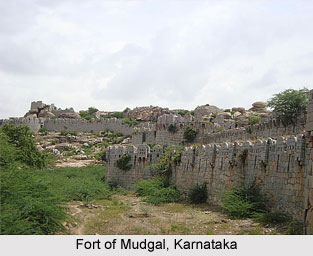 Tuluva Narasa Nayaka was a Vijayanagar commander as well as a Bunt chieftain and the son of Tuluva Ishvara Nayaka, who was a Prime Minister. Following the demise of Tuluva Ishvara Nayaka in the year 1491, an army commander was said to have assassinated Thimma Bhupala, who was the crown prince. Therefore, Narasimha Raya II, the other prince was crowned the king by Narasa Nayaka. However, the real reigns of the administrative power of the kingdom lay in the hands of Narasa Nayaka. His aim was to be responsible for sustenance of the political stability of his empire and was referred to as the `rashakarta` or the protector and also `Svami` or Lord. The prestigious offices of `mahapradhana` or Prime Minister and also the `Senadhipati` or Commander-in-Chief were held by Tuluva Narasa Nayaka. He was also granted the title of `karyakarta` or the agent of the king. He was capable of obstructing the Gajapatis and Bahmani Sultans from invading the kingdom and also checked several revolts by treacherous chieftains who made attempts to assert their independence.
Tuluva Narasa Nayaka was a Vijayanagar commander as well as a Bunt chieftain and the son of Tuluva Ishvara Nayaka, who was a Prime Minister. Following the demise of Tuluva Ishvara Nayaka in the year 1491, an army commander was said to have assassinated Thimma Bhupala, who was the crown prince. Therefore, Narasimha Raya II, the other prince was crowned the king by Narasa Nayaka. However, the real reigns of the administrative power of the kingdom lay in the hands of Narasa Nayaka. His aim was to be responsible for sustenance of the political stability of his empire and was referred to as the `rashakarta` or the protector and also `Svami` or Lord. The prestigious offices of `mahapradhana` or Prime Minister and also the `Senadhipati` or Commander-in-Chief were held by Tuluva Narasa Nayaka. He was also granted the title of `karyakarta` or the agent of the king. He was capable of obstructing the Gajapatis and Bahmani Sultans from invading the kingdom and also checked several revolts by treacherous chieftains who made attempts to assert their independence.
Narasa Nayaka`s Victory in Southern India
In 1463, when Saluva Narasimha was the ruler of Vijayanagar Empire, the area around the southern fringes of Kaveri River were lost and it escaped from the clutches of the reign of this king. This had occurred since the ruler was engaged in putting down conquests in regions which were in closer proximity to his capital. The governor of Tanjore and Trichi were compelled to surrender to the might of Tuluva Narasa Nayaka. The entire area around the southern portion of Kavery River, which extended to Cape Comorin were brought under the administration and control of Narasa Nayaka. This was not his only accomplishment. He also brought under control the chiefs of Madurai, Chera, Chola Gokarna and Hoysala chiefs of Srirangapatna which were located on the western coast of the country. Thereafter, all these regions were annexed by the Vijayanagar Empire in a successful campaign which continued till the year 1497. Prataparudra, a Gajapati king had attacked the empire of Vijayanagar in the year 1496 and marched as far as Pennar. However, he was unsuccessful since his advance was checked by Narasa Nayaka.
Bahmani Politics
Tuluva Narasa Nayaka was an intelligent ruler and consumed little time to strengthen his own kingdom. The kingdom supervised by the Bahmani Sultans was gradually fragmenting into smaller chiefdoms. A Bahmani minister named Qasim Barid presented a proposal to Narasa Nayaka that he would grant Nayaka the forts of Mudgal and Raichur in exchange for his cooperation in a war against Yusuf Adil Shah of Bijapur. It is believed that Tuluva Narasa Nayaka sent his army to the region surrounding Raichur Doab, which was able to defeat Yusuf Adil Shah. Yusuf Adil Shah plotted against Narasa Nayaka and had him murdered, along with his seventy high-ranking officers. But Adil Shah recovered the Doab area from the control of the Vijayanagar empire only in the year 1502.
By the time the rule of Saluva Narasimha Raya had concluded, Tuluva Narasa Nayaka had succeeded in numerable attempts to safeguard the interests of the kingdom and protect it at all costs. He was well-equipped with a powerful army and effectual administration. The Gajapatis and Bahmani Sultans were tamed by Narasa Nayaka After his death, his son Krishna Deva Raya would be his successor to the throne of Vijayanagar. During the year 1503, Viranarasimha Raya, his eldest son ascended the throne after the death of his father.



















